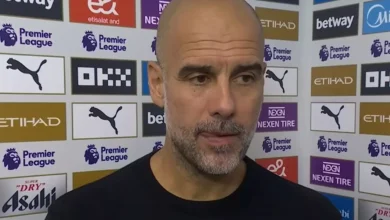Arne Slot’s Bold Tactical Experiment: Dominik Szoboszlai’s Positional Revolution at Liverpool

In the ever-evolving landscape of modern football, tactical innovation has become the hallmark of successful coaching. Arne Slot, Liverpool’s astute manager, has once again demonstrated his willingness to think outside conventional boundaries by deploying Hungarian midfielder Dominik Szoboszlai in an unexpected position during a behind-closed-doors friendly against Stoke City. This tactical experiment has sparked intense debate among Liverpool supporters and football analysts alike, raising questions about the future tactical direction of the Premier League champions
The match itself was a resounding success for Liverpool, with the Reds securing a commanding 5-0 victory over Stoke City at their AXA Training Centre. Darwin Nunez was the star of the show, netting a hat-trick that will undoubtedly boost his confidence ahead of the new season. Young talent Rio Ngumoha and new signing Federico Chiesa also found the back of the net, contributing to what was clearly a productive training session disguised as a friendly.
However, the scoreline wasn’t what captured the attention of Liverpool’s fanbase. When the team sheet was leaked online by journalist Ben Pescod, eagle-eyed supporters immediately noticed something unusual: Dominik Szoboszlai, typically a central midfielder, was listed as playing right-back. This positional switch represented more than just a simple tactical tweak – it suggested a fundamental reimagining of how one of Liverpool’s key players might be utilized.
The leaked lineup also revealed other intriguing elements, including a start for record signing Florian Wirtz, who was deployed in the number 10 position. Perhaps equally noteworthy was the absence of Luis Diaz from the squad entirely, fueling speculation about the Colombian winger’s future at the club. With Curtis Jones and promising youngster Trey Nyoni occupying the deeper midfield positions, Szoboszlai found himself in uncharted territory – at least in a Liverpool shirt
To understand the significance of this positional experiment, one must first appreciate the tactical evolution that has characterized Slot’s tenure at Liverpool. The Dutch manager has consistently shown a preference for fluid, adaptable systems that can shift and morph depending on the phase of play. His use of inverted full-backs, particularly with Trent Alexander-Arnold, has been a defining feature of Liverpool’s tactical approach.
In this context, deploying Szoboszlai at right-back begins to make more sense. The Hungarian international possesses several attributes that could make him effective in this hybrid role. His exceptional passing range, both short and long, would allow him to contribute significantly to Liverpool’s build-up play from deeper positions. His energy and work rate, qualities that made him indispensable in midfield, would translate well to the defensive phases of play, particularly when tracking back to support his teammates.
Furthermore, Szoboszlai’s technical ability and comfort in possession would enable him to invert into midfield when Liverpool have the ball, essentially creating an overload in the center of the park. This tactical flexibility could prove invaluable against different types of opposition, allowing Slot to adjust his team’s shape and approach without making substitutions.
The presence of Conor Bradley and Jeremie Frimpong on the bench during the friendly also suggests that this wasn’t born out of necessity but rather genuine tactical experimentation. Both players are natural right-backs with considerable quality, indicating that Slot was deliberately choosing to explore Szoboszlai’s potential in this role rather than simply filling a gap in the squad.
The reaction from Liverpool supporters has been characteristically passionate and divided. Social media platforms erupted with commentary ranging from enthusiastic endorsement to skeptical concern, reflecting the complexity of opinions within the fanbase.
Supporters favoring the experiment have drawn comparisons to other versatile players who have successfully adapted to multiple positions. One fan noted Szoboszlai’s remarkable versatility, suggesting they had seen him play “everything but center-back and goalkeeper.” This observation highlights one of the Hungarian’s most valuable attributes – his adaptability and football intelligence that allows him to understand different tactical requirements.
The comparison to Real Madrid’s Federico Valverde has been particularly prevalent among supporters. Valverde’s ability to excel in multiple positions, including right-back when required, has made him one of the most valuable players in Carlo Ancelotti’s squad. Liverpool fans see similar potential in Szoboszlai, viewing his positional flexibility as a tactical weapon that could give Slot additional options throughout the season.
However, not all supporters are convinced by the experiment. Many fans have expressed concern about moving Szoboszlai away from his natural midfield position, where he has already proven his worth to the team. “Hell no, he must play defensive midfielder,” wrote one supporter, echoing the sentiment of those who believe Szoboszlai’s impact is maximized in his traditional role.
The debate reflects a broader philosophical question about player utilization in modern football. Should managers prioritize getting their best players in their optimal positions, or should they explore tactical innovations that might unlock new dimensions to their team’s play? The answer likely depends on the specific context of each match and the overall tactical objectives of the manager.
Interestingly, this isn’t the first time Szoboszlai has been deployed in a defensive role. During his time at RB Leipzig, the Hungarian was occasionally utilized at right-back, most notably in a DFB Pokal fixture where he delivered an outstanding performance. His contribution was so impressive that teammate Benjamin Henrichs compared him to legendary Brazilian full-back Dani Alves, high praise indeed for a player operating outside his natural position.
This experience suggests that Szoboszlai possesses the tactical awareness and technical skills necessary to excel in the right-back role. His performance for Leipzig demonstrated his ability to contribute both defensively and offensively from this position, registering two assists in that particular match. Such statistics indicate that his deployment at right-back isn’t merely about defensive solidity but also about maintaining Liverpool’s attacking threat from wide areas.
The comparison to Dani Alves is particularly significant given the Brazilian’s revolutionary impact on the full-back position during his playing career. Alves redefined what it meant to play right-back, combining defensive responsibility with attacking creativity in a way that influenced an entire generation of players. If Szoboszlai can bring even a fraction of that innovation to Liverpool’s right-back position, it could represent a significant tactical advantage.
Slot’s willingness to experiment with Szoboszlai’s position reflects a broader trend in modern football toward positional fluidity and tactical flexibility. The most successful teams in contemporary football are those that can adapt their shape and approach based on the specific demands of each match. By developing players who can operate effectively in multiple positions, managers create tactical options that can prove decisive in crucial moments.
Liverpool’s success under previous manager Jurgen Klopp was built partly on this principle of tactical adaptability. Players like James Milner and Jordan Henderson were frequently deployed in various positions to meet specific tactical requirements. Slot appears to be continuing this tradition while adding his own tactical innovations to the mix.
The use of Florian Wirtz as a number 10 in the same match also suggests that Slot is exploring different ways to deploy his attacking talent. With Wirtz occupying the advanced midfield role, deploying Szoboszlai at right-back allows Liverpool to maintain numerical superiority in central areas while ensuring defensive stability on the right flank.
As Liverpool prepares for their pre-season tour to the Far East, including matches against AC Milan in Hong Kong and Yokohama FM at their home stadium, the tactical experiments conducted in training matches like the one against Stoke City take on additional significance. These friendly matches provide valuable opportunities for managers to test different approaches without the pressure of competitive fixtures.
The upcoming fixtures against Athletic Club and the Community Shield match against Crystal Palace at Wembley will provide further opportunities for Slot to refine his tactical approach. Whether Szoboszlai’s right-back experiment makes its way into competitive matches remains to be seen, but the groundwork is clearly being laid for tactical flexibility throughout the season.
Liverpool’s status as Premier League champions means they will face teams that approach matches with different tactical setups and objectives. Having players like Szoboszlai who can adapt to various positions could prove crucial in navigating these different challenges. Against teams that set up defensively, his creativity and passing range from right-back could help unlock stubborn defenses. Against more attacking opponents, his energy and work rate could provide additional defensive security. Szoboszlai’s potential deployment at right-back also reflects the ongoing evolution of the full-back position in modern football. Traditional full-backs were primarily defensive players with limited attacking responsibilities. However, the modern game demands players who can contribute significantly in both phases of play.
Liverpool’s success with players like Andy Robertson and Trent Alexander-Arnold has been built on their ability to provide width in attack while maintaining defensive solidity. Alexander-Arnold’s role as an inverted full-back, drifting into central midfield positions when Liverpool have possession, has been particularly influential in the team’s tactical approach.
By potentially deploying Szoboszlai in a similar role, Slot could be looking to add a different dimension to Liverpool’s right-back position. While Alexander-Arnold brings exceptional crossing ability and long-range passing, Szoboszlai offers different qualities including close control, dribbling ability, and a more dynamic approach to joining attacking phases.
Despite the potential benefits of this tactical experiment, there are legitimate concerns that must be addressed. Moving Szoboszlai away from his natural midfield position could diminish his impact on the team’s overall play. His ability to drive forward with the ball, create chances from central areas, and provide goals from midfield are valuable assets that might be reduced if he’s deployed as a full-back.
Additionally, the defensive requirements of playing right-back in the Premier League are considerable. While Szoboszlai has shown his ability to track back and contribute defensively, the consistent defensive responsibility required of a full-back is different from the more selective defensive duties of a central midfielder. The physicality and pace of Premier League wingers will test his defensive capabilities in ways that might not have been evident in the Stoke City friendly.
There’s also the question of how this positional change might affect team chemistry and understanding. Liverpool’s success has been built on players developing understanding and partnerships over time. Moving Szoboszlai to right-back could disrupt these established relationships, at least initially, potentially affecting the team’s overall cohesion.
The experiment with Szoboszlai at right-back also raises questions about Liverpool’s squad depth and composition. If this tactical innovation proves successful, it could influence future transfer decisions and squad planning. Having a player who can operate effectively as both a central midfielder and right-back provides significant tactical flexibility and could reduce the need for specialized squad players.
This versatility could prove particularly valuable during the congested fixture periods that characterize the modern football calendar. With Liverpool likely to be competing in multiple competitions throughout the season, having players who can adapt to different positions could help manage squad rotation and maintain tactical consistency even when key players are unavailable. The absence of Luis Diaz from the friendly squad has already sparked speculation about potential departures, and Szoboszlai’s positional flexibility could influence decisions about incoming transfers as well. If he can effectively cover right-back when needed, it might reduce the urgency to sign additional defensive reinforcements.
As Liverpool prepares for the new season, the tactical experiments conducted during pre-season will ultimately be judged on their effectiveness in competitive matches. Slot’s willingness to explore different approaches demonstrates his confidence in his players’ adaptability and his own tactical philosophy.
The success or failure of deploying Szoboszlai at right-back will depend on several factors: his adaptation to the defensive requirements of the position, the team’s ability to maintain their attacking threat with this tactical setup, and the opposition’s ability to exploit any potential weaknesses in this approach.
What seems certain is that Slot is building a Liverpool team capable of tactical flexibility and adaptation. In a league as competitive as the Premier League, where marginal gains can prove decisive, having multiple tactical options could provide a significant advantage
Arne Slot’s decision to deploy Dominik Szoboszlai at right-back in the friendly against Stoke City represents more than just a simple positional experiment. It reflects a broader tactical philosophy that values flexibility, adaptation, and innovation. While Liverpool fans remain divided on the merits of this approach, there’s no denying that it demonstrates the ambition and tactical thinking that could define the team’s approach in the coming season.
The Hungarian’s versatility, combined with his technical ability and tactical intelligence, makes him an intriguing candidate for this hybrid role. His previous experience in the position at RB Leipzig suggests that this isn’t merely an experiment but a calculated tactical decision based on his proven capabilities.
As the new season approaches, Liverpool supporters will be watching closely to see whether this tactical innovation makes its way into competitive matches. Regardless of the ultimate outcome, Slot’s willingness to explore new tactical possibilities bodes well for a team looking to maintain their position at the summit of English football while adding new dimensions to their already impressive tactical repertoire.
The debate among fans reflects the passion and engagement that makes football such a compelling sport. Whether Szoboszlai’s positional switch proves to be a masterstroke or merely an interesting experiment, it has certainly captured the imagination of Liverpool supporters and provided another talking point as they eagerly await the start of what promises to be another fascinating season.















